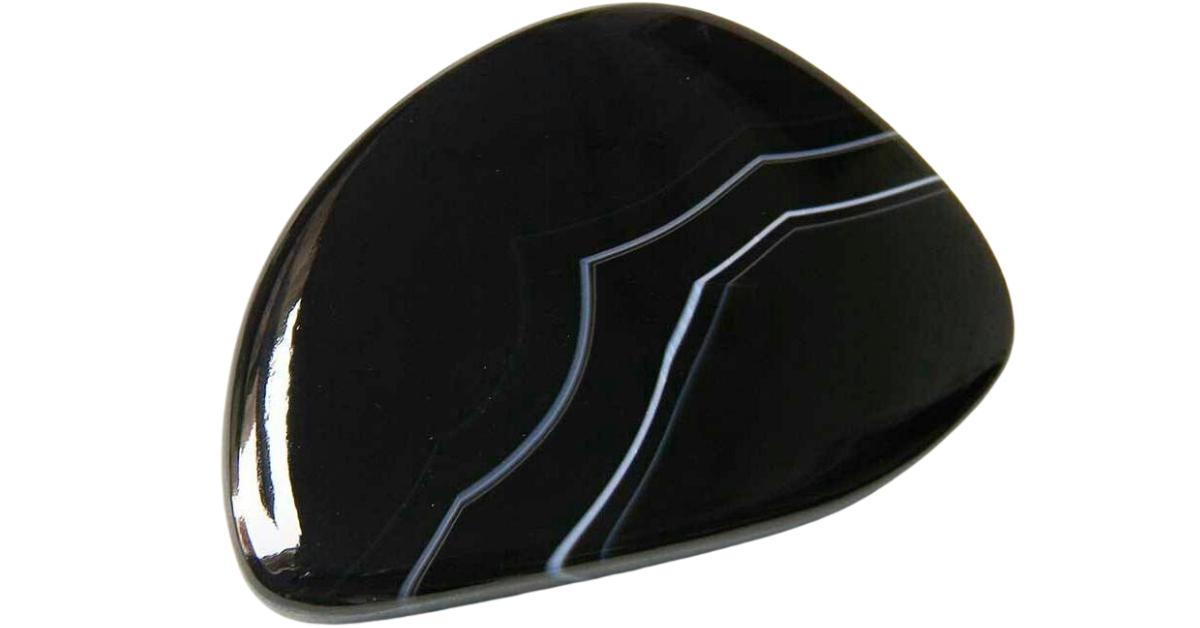Have you seen an onyx? If you have, then you know just how fascinating it is. But did you know that it can come in many colors and patterns?
Onyx is a type of chalcedony that’s formed when water drips from stalactites and stalagmites in caves. The really neat part is how these crystals layer over each other, creating beautiful bands.
If you’re wondering what onyx looks like, some are solid black and super sleek, while others can have stripes of white, red, green, or even orange. These stripes or bands can be straight, wavy, or circular.
People have been using onyx for thousands of years! It was popular in ancient Greece and Rome for making jewelry and decorative objects. If you want to know more about the types of onyx, continue reading as we go through each of them.
The 12 Different Types Of Onyx And What They Look Like
As an incredibly interesting type of rock, the value of onyx is not just about how much it’s worth in money. Each piece of it is unique, with different colors and patterns that make it special.
As we dive into learning about the different types of onyx, you’ll discover just how awesome and diverse this rock can be.
Black Onyx
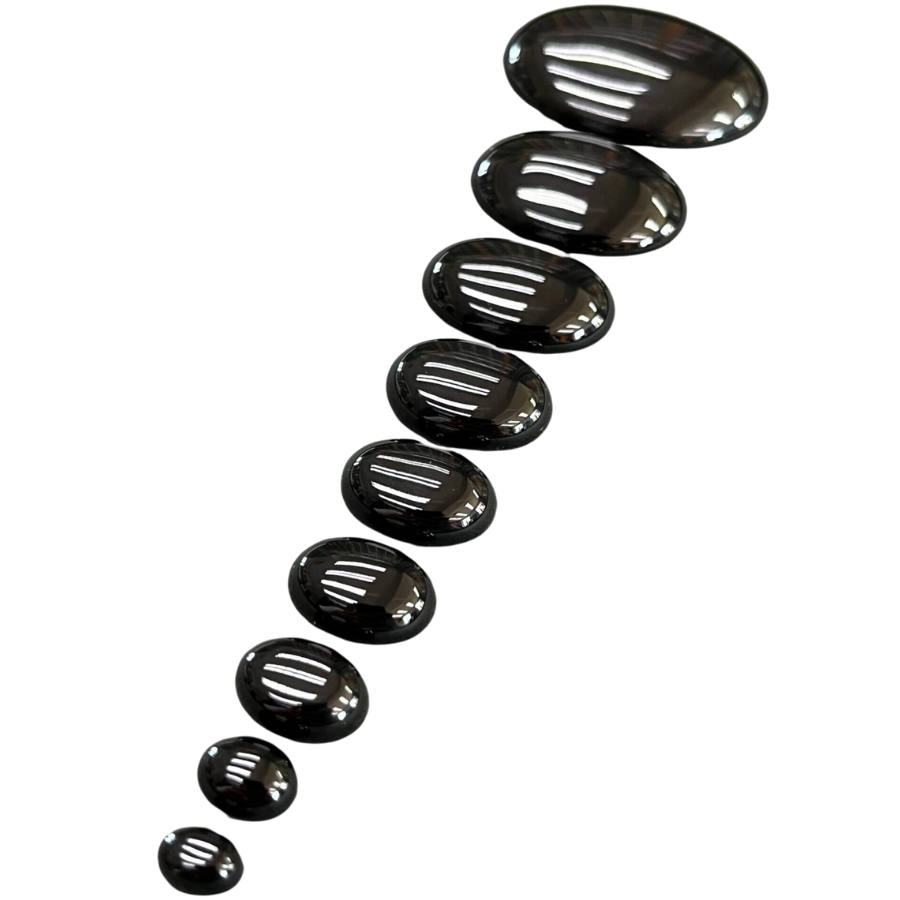
Black onyx is known for its deep, rich black color, which can sometimes have white bands or stripes running through it.
The way black onyx looks, with its smooth, glossy surface and striking color, makes it popular for jewelry and decorative objects.
It’s often cut into beads, cabochons (which are polished but not faceted), and other shapes for necklaces, earrings, and bracelets. People also use it for things like sculptures and even inlay work in furniture.
One really interesting thing about black onyx is that it’s often used in intaglio and cameo jewelry.
This is where the stone is carved into to create a design that stands out in relief against the background. Its dark color, like that of many black gems, provides a great contrast, making the carved designs stand out.
Where you can find black onyx
Often, you can find black onyx in areas where volcanic activity has happened. Some well-known spots for finding it include Brazil, India, and Madagascar.
If you’re from the USA, you can find black onyx in Arizona and California, where there’s a history of volcanic activity. For more guidance, check out our article on the best rockhounding locations.
DON'T MISS OUT ON ANY GREAT FINDS!
While you're out searching you're going to find A LOT of other interesting rocks and minerals along the way. The last thing you want to do is toss out something really interesting or valuable. It can be easy to misidentify things without a little guidance.
You absolutely need a good reference guide in order to understand what you're looking at!
We've put together a fantastic field guide that makes identifying 140 of the most interesting and valuable rocks and minerals you will find REALLY EASY. It's simple to use, really durable, and will allow you to identify just about any rock and mineral you come across. Make sure you bring it along on your hunt!
Now, back to the identification specifics:
Sardonyx
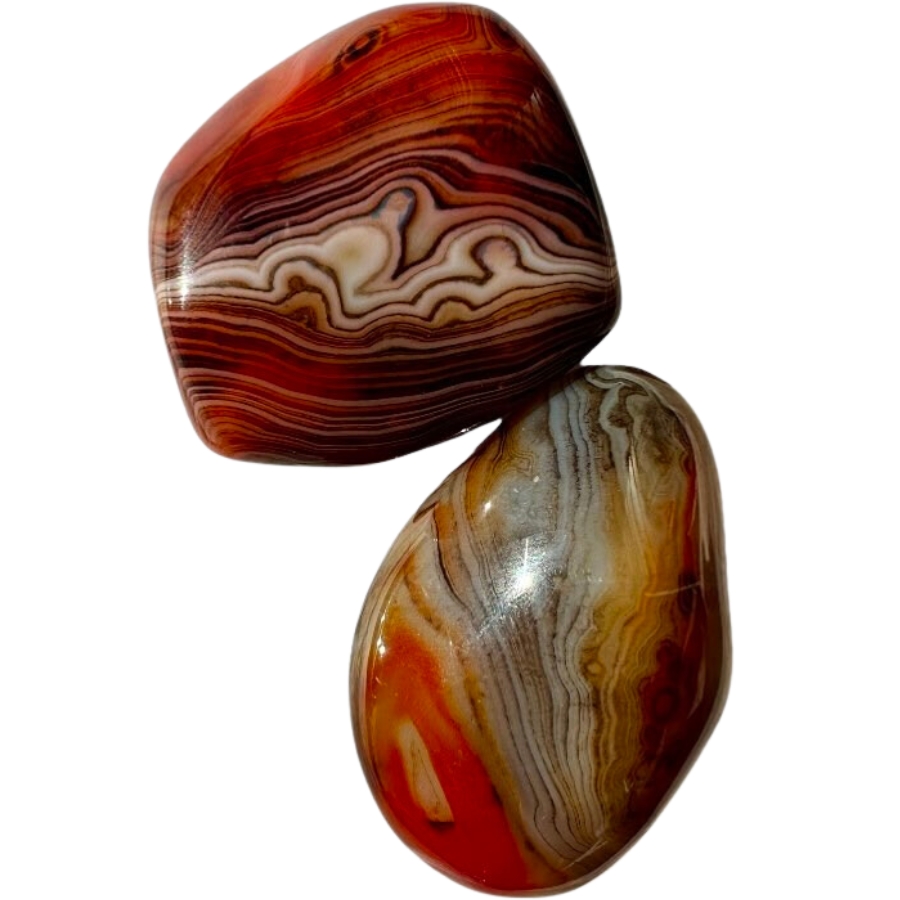
Sardonyx is made up of two different types of chalcedony: sard and onyx. Sard is this reddish-brown color, while onyx is typically black.
When they come together in sardonyx, they form these cool, alternating bands of dark and light colors. This layering makes each piece of stand out, as no two stones are exactly alike.
People have valued this gem for a long time, especially for making jewelry and carved items like cameos. Cameos are neat pieces of art where the design is carved in relief against a contrasting background.
Sardonyx is perfect for this because the layers create a natural contrast. It’s also really hard and durable, which is great for detailed carving.
It was also one of the first gemstones used in seal rings in ancient times. These rings were worn by powerful people and used to stamp an impression in wax, sealing important documents.
Where you can find sardonyx
You can find sardonyx in countries like Brazil, India, and Uruguay, where conditions are just right for it to form.
States like Oregon and Washington in the USA are also good spots for sardonyx. If you need more information on this, check out our guide to mining for crystals.
Banded Onyx
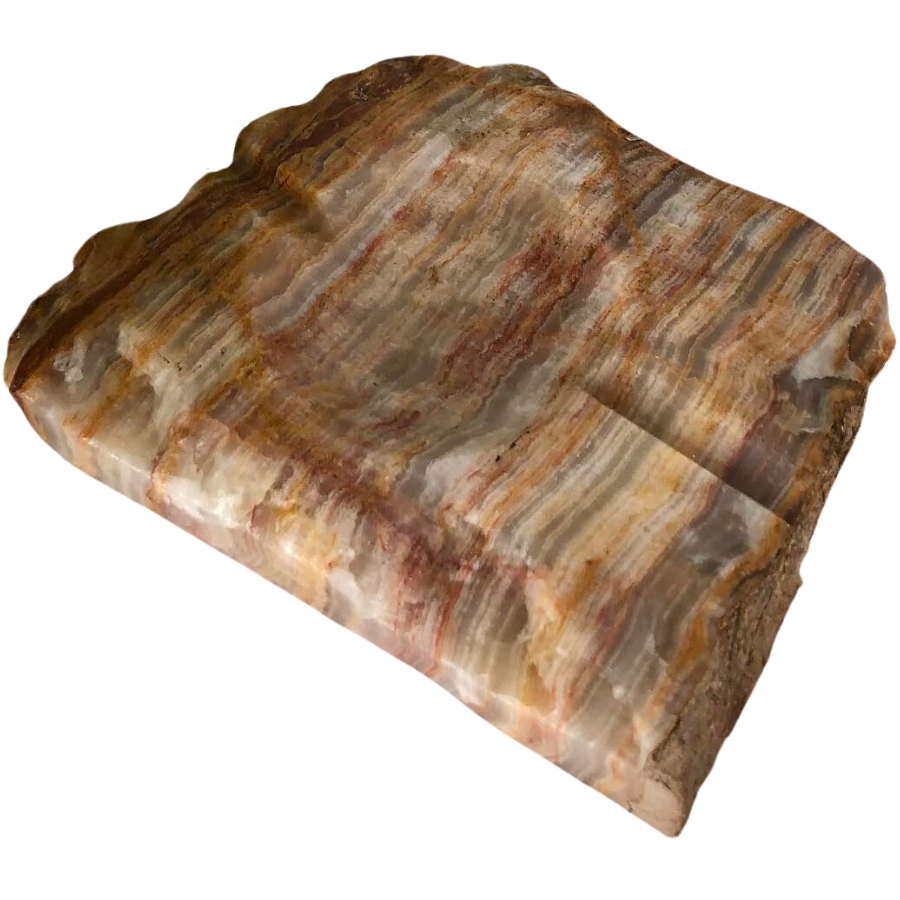
Banded onyx, as the name suggests, stands out because of its unique stripes. These bands can be all sorts of colors like white, black, brown, and even green, making each piece different.
The bands in banded onyx are straight or curved, and they give the stone this cool layered look. It’s like nature’s own artwork!
This onyx type is well-loved for its striking appearance. It’s used a lot in jewelry, like necklaces and rings, because it can be polished to a high shine.
It’s also popular for carved items and decorative pieces, like bowls and sculptures. Banded onyx is not just pretty; it’s also pretty tough and durable, which is great for carving and everyday wear.
For centuries, it has also been used in making cameos and intaglios. The layers in the banded onyx create a natural contrast that makes these carvings look incredible.
Where you can find banded onyx
Banded onyx grows in the cavities of other rocks, where silica from groundwater layers up over time. Places like Mexico, Pakistan, and Brazil are known for having this gem.
In the USA, states like Arizona and California are hotspots for finding it, too. Refer to our article on gem mines near you if you need help finding banded onyx.
White Onyx
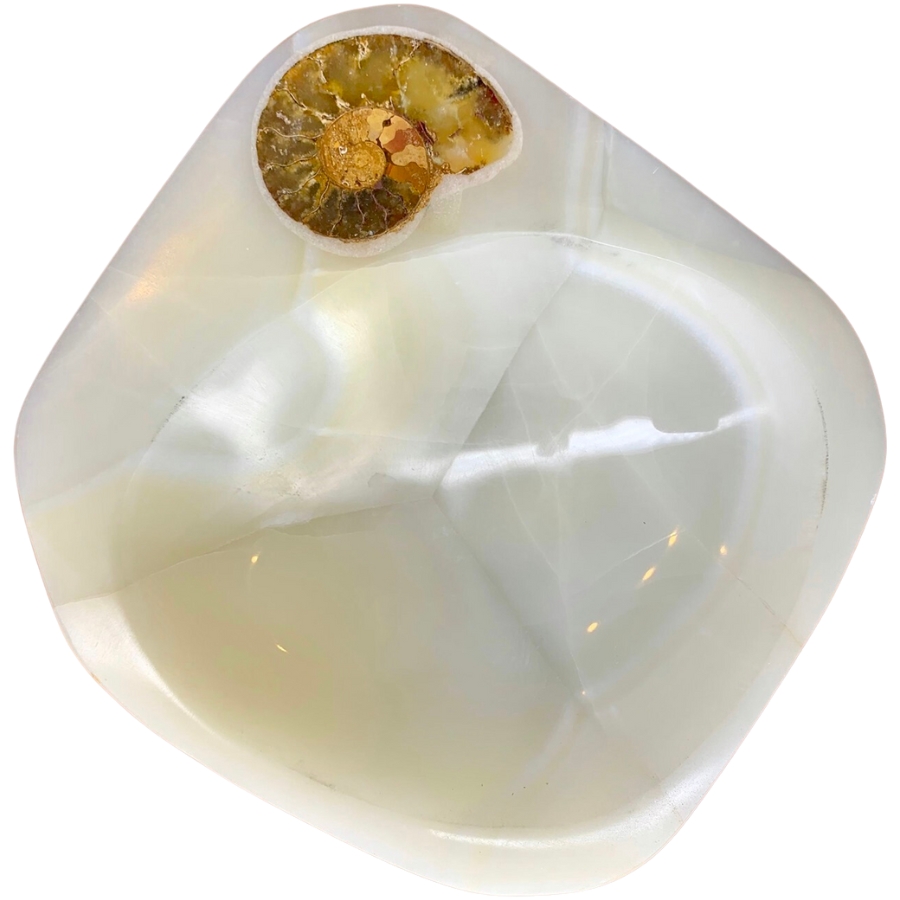
Known for its milky white color, white onyx can range from pure white to a soft, creamy hue. Sometimes, it has bands or swirls of other colors like gray, brown, or even gold, which add to its distinct appearance.
Like other white gemstones, the way white onyx looks almost like frozen water with waves and patterns frozen in time is truly fascinating.
This gem is valued for its elegant and serene look. It’s often used in jewelry, like pendants and earrings, because of how it glows and catches the light.
White onyx is also popular in interior design, like for countertops, tiles, and lamp bases, because it can make any space feel more luxurious and calming.
Throughout history, it has been used in carving and sculpture. Its soft color and translucency make it ideal for intricate carvings, and many ancient cultures used it for making statues and other decorative items.
Where you can find white onyx
White onyx is typically found in places with rich deposits of silica. Some countries known for it include Mexico, Pakistan, and Turkey, where the geological conditions are just right for its formation.
You can also find white onyx in Arizona and Utah, both known for their diverse and unique geological features.
Carnelian Onyx
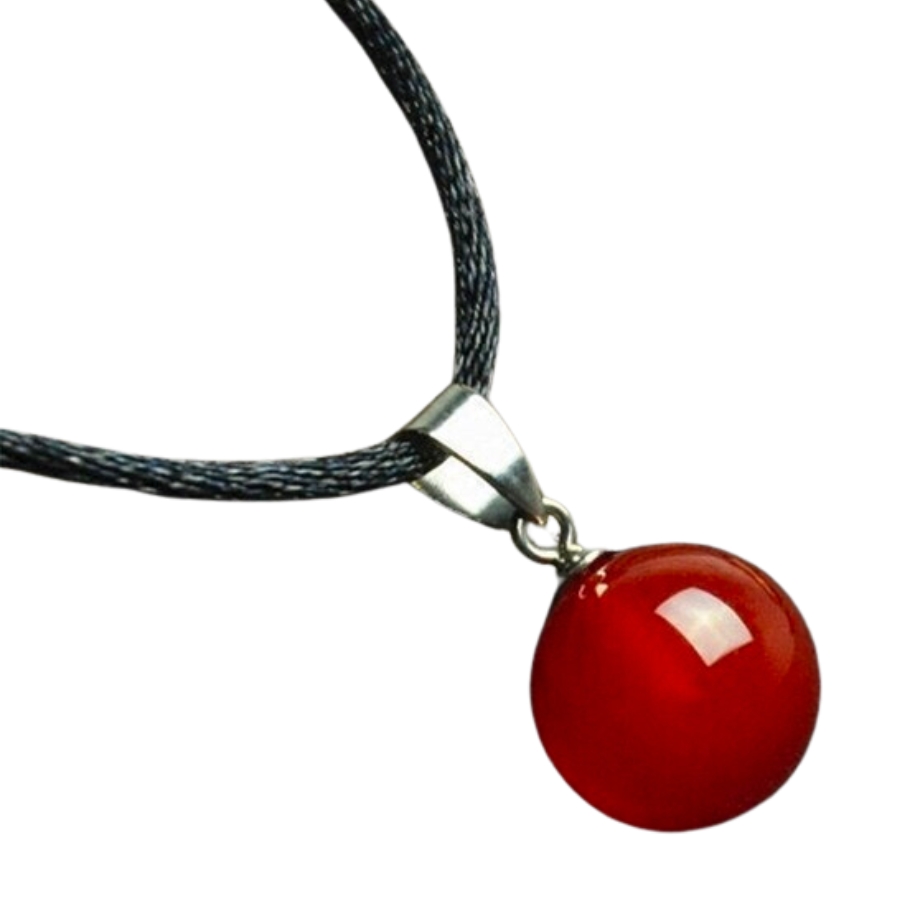
If you prefer vibrant colors, carnelian onyx is for you. It’s a combination of carnelian and onyx, hence the name.
Carnelian is known for its reddish-orange color, while onyx usually has black, white, or brown bands. When these two come together, they create a striking contrast with layers of bold red and other colors.
This gem is often used in jewelry because its colors are so eye-catching. It’s also popular for carved items, where the different layers can be used to create amazing designs.
In ancient times, it was also used for making seal rings. These rings were carved with designs and used to stamp wax seals on documents.
The hardness of carnelian onyx made it perfect for detailed carving, and the bright colors would have made the seals stand out. This historical use shows just how long people have been admiring and using it.
Where you can find carnelian onyx
Carnelian onyx forms in places with silica-rich groundwater, like India, Brazil, and Uruguay. If you’re planning on exploring the USA, Oregon and Washington are great spots to find this colorful stone, too.
Blue Onyx
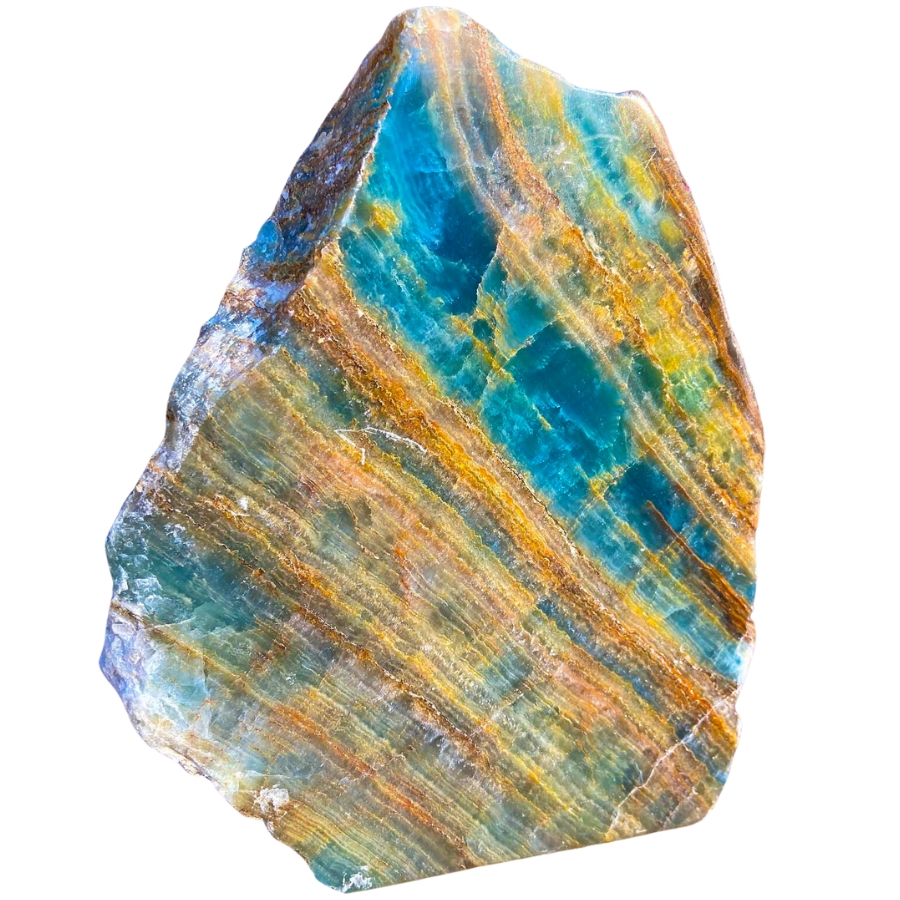
Blue onyx has a unique blue color that can range from a soft, sky blue to a deeper, more vivid hue. It’s among the most beautiful blue crystals out there.
Sometimes, it also has bands or streaks of white or lighter blue. The way the colors blend and contrast in blue onyx makes it look like a piece of the sky captured in stone.
Like other types of onyx, blue onyx forms from silica deposits in groundwater. The specific minerals and conditions involved in its formation give it its special color.
Its beauty and rarity make it an easy favorite. It’s often used in jewelry and it’s popular in decorative arts, like inlays and carvings.
Due to its rarity, it’s considered a prized find among collectors and gem enthusiasts.
Where you can find blue onyx
Being quite rare, blue onyx is found in only a few places around the world. Some countries where it’s found include Argentina and Pakistan. You can also find it in Oregon, USA.
Red Onyx
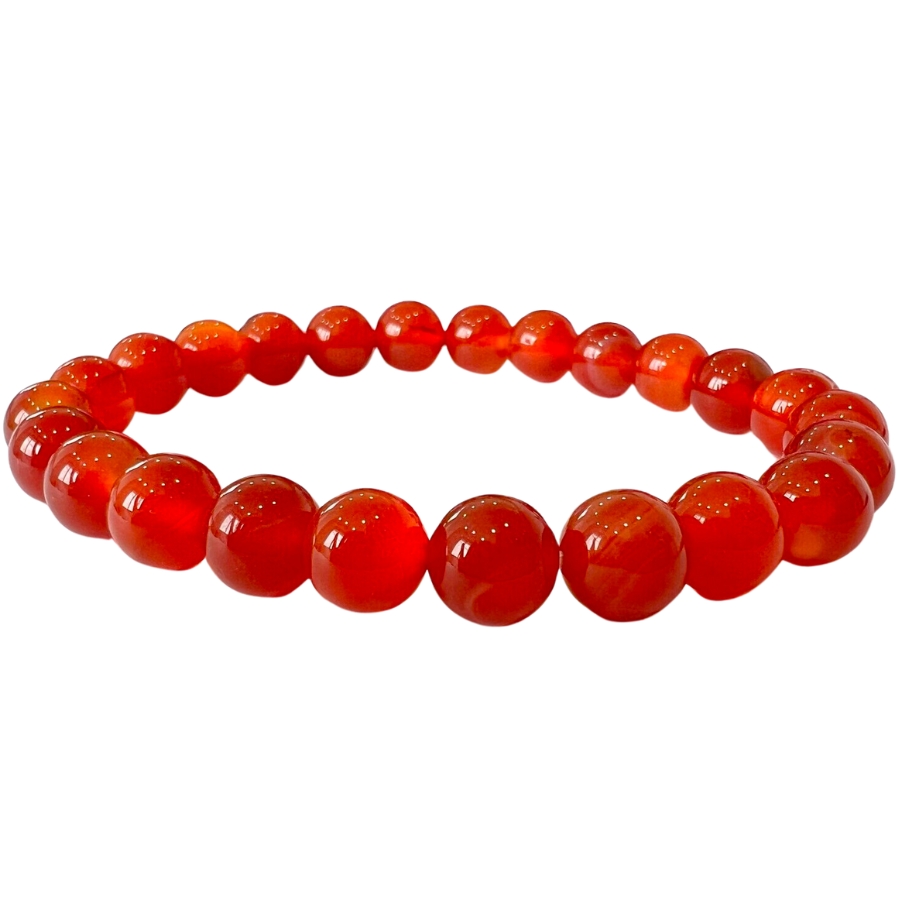
With a striking red color that can range from a soft, pinkish red to a deep, rich burgundy, red onyx is a vibrant and eye-catching stone.
Sometimes, it also has bands or layers of white or lighter red, which add to its unique look. These bands can be straight, wavy, or circular.
People value red onyx for its striking appearance and the depth of its color. It’s popular in jewelry, like rings and necklaces, where it adds a touch of elegance and boldness like other red gemstones.
It’s also used in decorative items, like sculptures and vases, because of its ability to be polished to a high shine and its striking color.
It was used in ancient carving and engraving, particularly for making seals and stamps. The hardness of red onyx made it ideal for detailed work, and its vibrant color would have made the carved designs really pop.
Where you can find red onyx
Countries like Mexico, Brazil, and Pakistan are known for having red onyx deposits. These locations have the mineral content and environment needed for this gem to develop naturally.
In the USA, Arizona and California are also spots where you can uncover red onyx.
Green Onyx
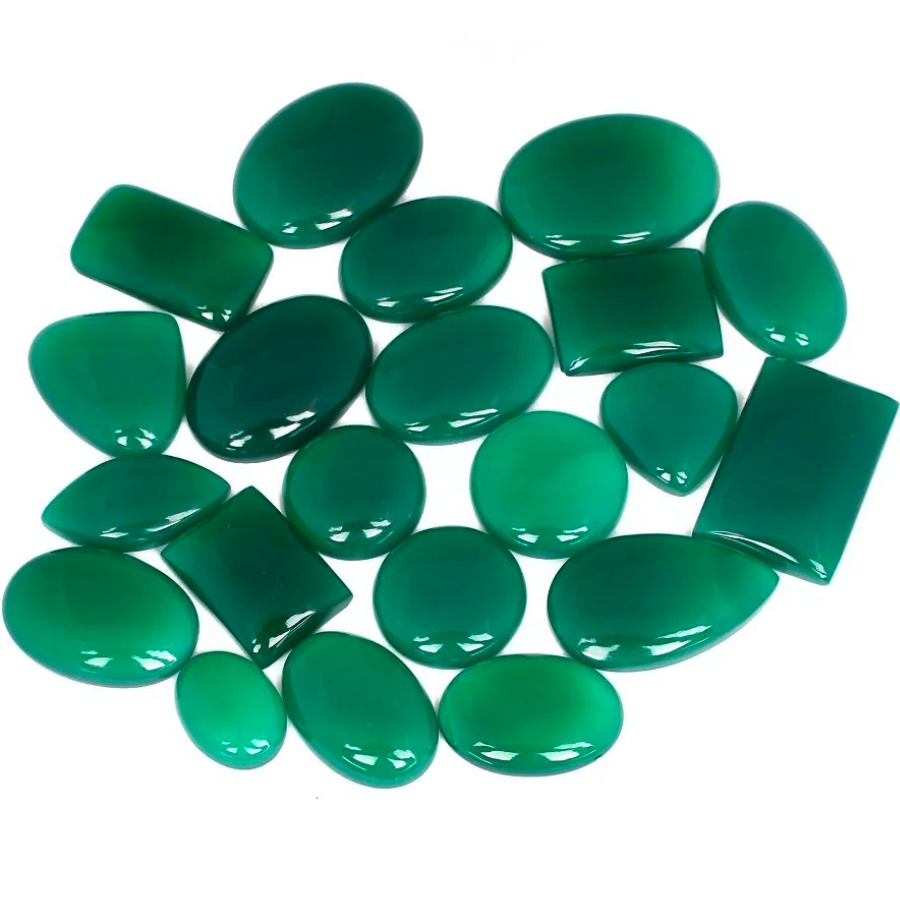
Green onyx grabs your attention with its lush, vibrant color. It ranges from a light, almost translucent green to a deeper, more intense emerald hue.
Some pieces of green onyx have beautiful white or lighter green bands, creating a striking contrast. Its unique and mesmerizing appearance is thanks to the way the colors blend and layer.
Its natural beauty and the sense of tranquility it brings make green onyx valuable for many. It’s widely used in jewelry because of how it glows and catches light.
Green onyx is also popular in interior design for items like countertops and decorative tiles, adding a touch of elegance and serenity to any space.
In ancient times, it was believed to have special properties and was used in various ceremonies and rituals.
Where you can find green onyx
To find onyx, your best chance is to explore countries like Brazil, India, and Pakistan. They have the geological features that allow for the growth of this vibrant stone.
Meanwhile, in the USA, states like Arizona and Oregon are also great for finding green onyx.
Honey Onyx
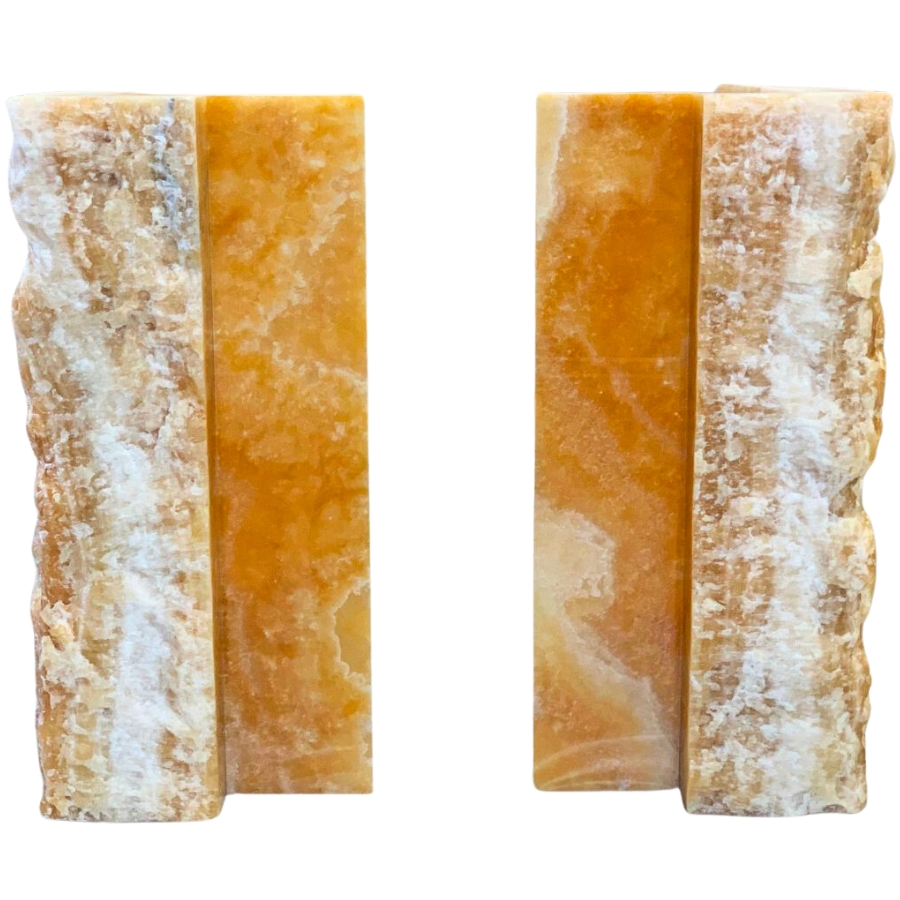
Honey onyx, as its name suggests, possesses warm, inviting color. It has a translucent quality, ranging from a light, honey-yellow to a rich, amber hue.
You might find pieces of this gem that feature beautiful bands or swirls of white, cream, or even orange. The way light passes through honey onyx, highlighting its colors and patterns, is simply stunning.
Honey onyx is appreciated for its warm glow and the sense of coziness it brings. It’s popular in interior design, being used for things like backlit wall panels, countertops, and lamp bases, where its translucency can be showcased.
Honey onyx is also used in jewelry, adding a touch of natural elegance and warmth to any piece.
Interestingly, this gem is often used in luxurious settings, like high-end hotels and spas, to create a calming and opulent atmosphere. Its ability to be backlit makes it perfect for creating stunning visual effects.
Where you can find honey onyx
Honey onyx naturally grows in places with volcanic activity and mineral-rich landscapes. Some countries known for it include Mexico, Turkey, and Iran, where the geological features are ideal for its formation.
You can also uncover honey onyx in Utah and Arizona. These states have the type of environment needed for this type of onyx to develop.
Niccolo Onyx
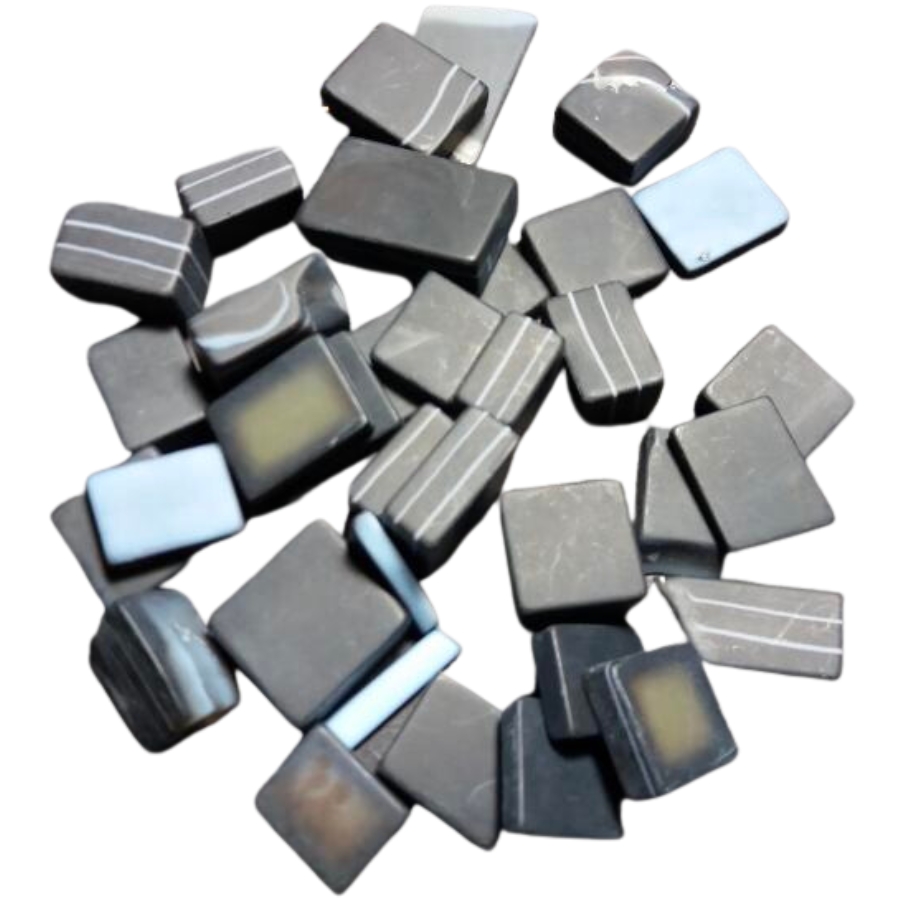
Niccolo onyx features a rich combination of deep black and striking white bands, creating a bold and timeless contrast.
Its name is derived from the Italian phrase “nicolo d’Onice,” which means “Niccolo onyx.” This name reflects the stone’s historic popularity in Italy, where it was used for carving and engraving exquisite designs.
Formed through a process similar to the different types of onyx, niccolo onyx develops as silica-rich groundwater deposits layers within other rocks. The specific minerals during its formation give it intense black and bright white colors.
Niccolo onyx is highly valued for its dramatic appearance and the way it can be polished to a high shine. It’s often used in jewelry, such as rings and pendants, where its bold contrast draws attention.
In interior design, it’s incorporated into luxurious spaces, creating statement pieces like countertops and decorative tiles.
Where you can find niccolo onyx
A few countries known for niccolo onyx include Mexico, Turkey, and Italy, where the geological features are ideal for its creation. In the USA, Arizona and California are also places where it can be discovered.
Brown Onyx
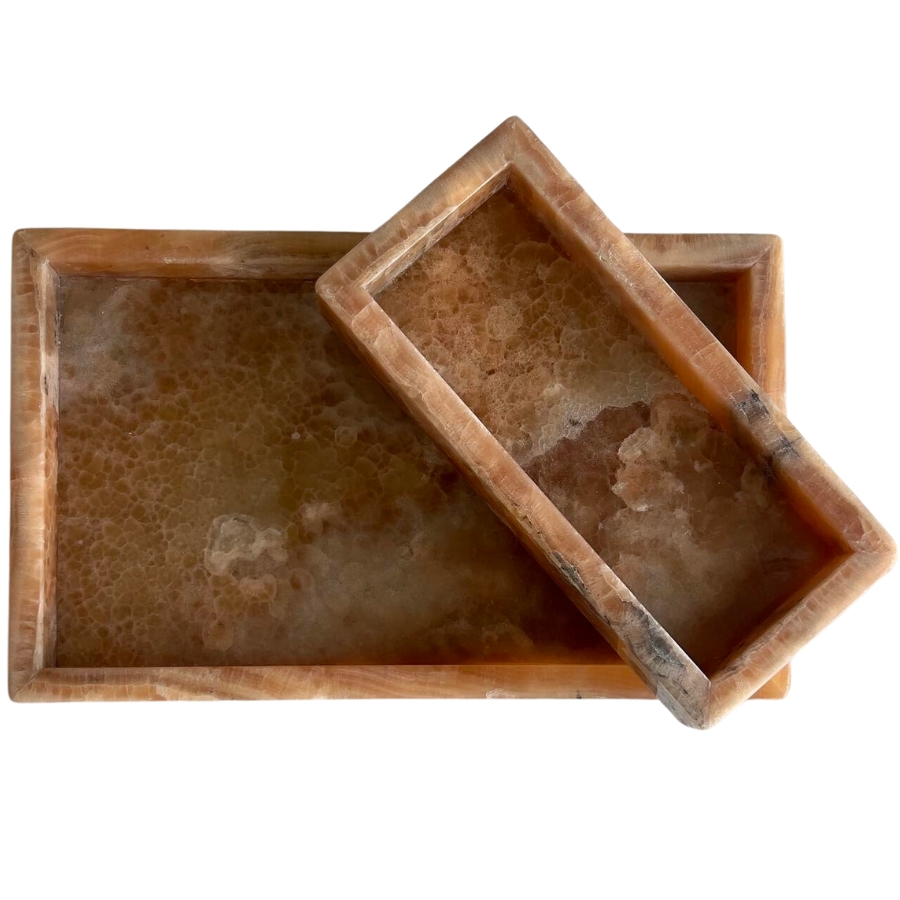
Brown onyx exudes warmth and earthiness with its beautiful shades of brown. It ranges from light tans and creams to deeper cocoa and mocha tones, often with subtle banding or veining that adds character.
What makes brown onyx distinct is its ability to evoke a sense of grounding and connection to nature. This is true for other brown rocks, too.
This unique stone is valued for its aesthetics and the sense of stability it brings to design and decor. It’s popular in jewelry, particularly in pieces that celebrate the beauty of natural gemstones.
It’s often used in interior settings, such as countertops, backsplashes, and fireplace surrounds, where its warm and inviting appearance can create a cozy atmosphere.
Brown onyx has been used historically in carvings and sculptures, often depicting intricate designs and figures. Its versatility as a carving material highlights its durability and the skill of artisans who have worked with it throughout history.
Where you can find brown onyx
Brown onyx is commonly found in regions with volcanic activity and mineral-rich landscapes. Mexico, Pakistan, and Turkey are known for having this gemstone.
If you’re planning on uncovering it in the USA, Arizona and California are your best bets for having brown onyx.
Orange Onyx
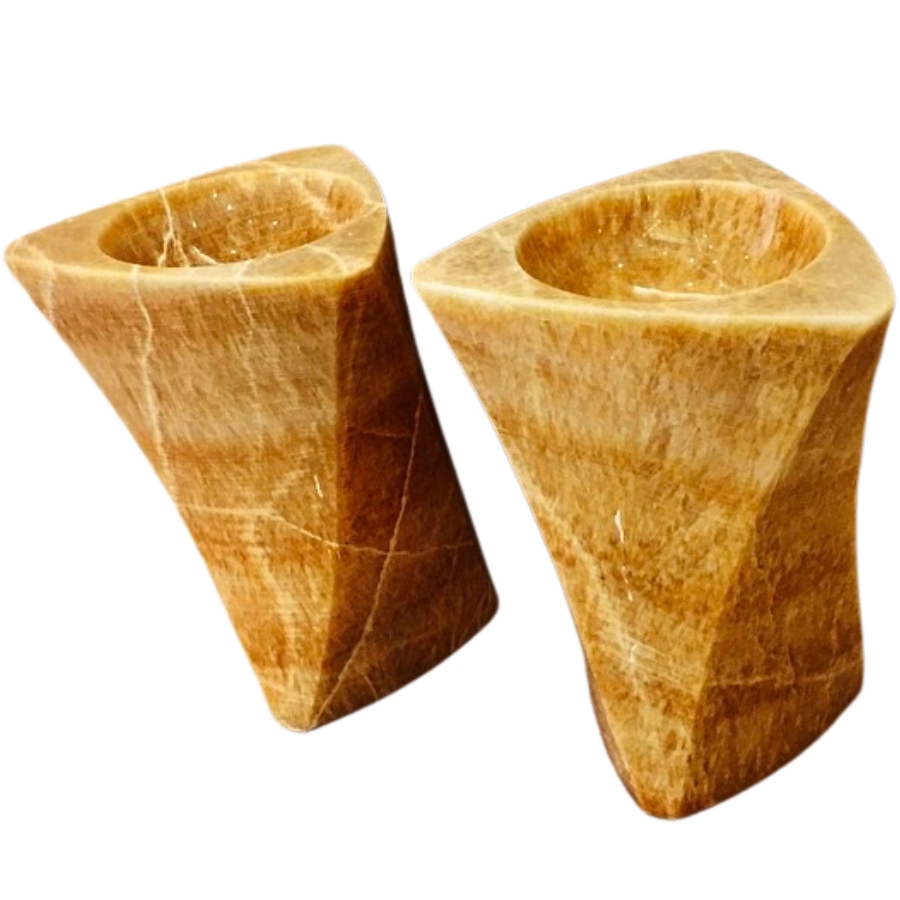
Orange onyx has vibrant and warm hues, ranging from soft oranges to deep, fiery shades. Its distinct appearance is characterized by translucent layers that showcase its captivating color.
As with other orange crystals, when light passes through this stone, it comes to life with a beautiful glow.
Orange onyx is valued for its beauty and the way it can be polished to reveal its intricate layers and enhance its translucency.
It’s often used in interior design, where it adds a touch of elegance to spaces as countertops, wall panels, and decorative accents. Its ability to diffuse light and create a warm ambiance makes it great for creating inviting atmospheres.
Orange onyx also has historical significance as a stone of protection and positivity. It was believed to ward off negative energies and bring a sense of optimism to those who possessed it.
Where you can find orange onyx
This captivating gemstone naturally grows in countries like Turkey, Iran, and Mexico, where there are deposits of calcium carbonate and other minerals.
In the USA, states such as California and Arizona also boast geological settings that allow orange onyx to develop.

